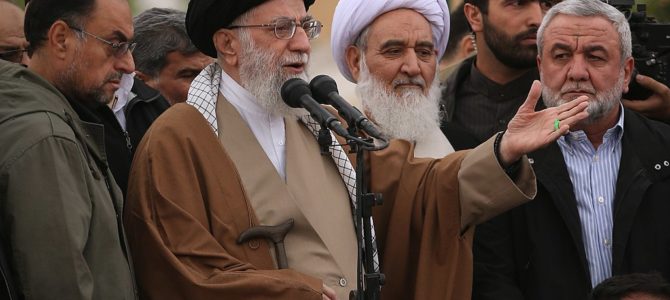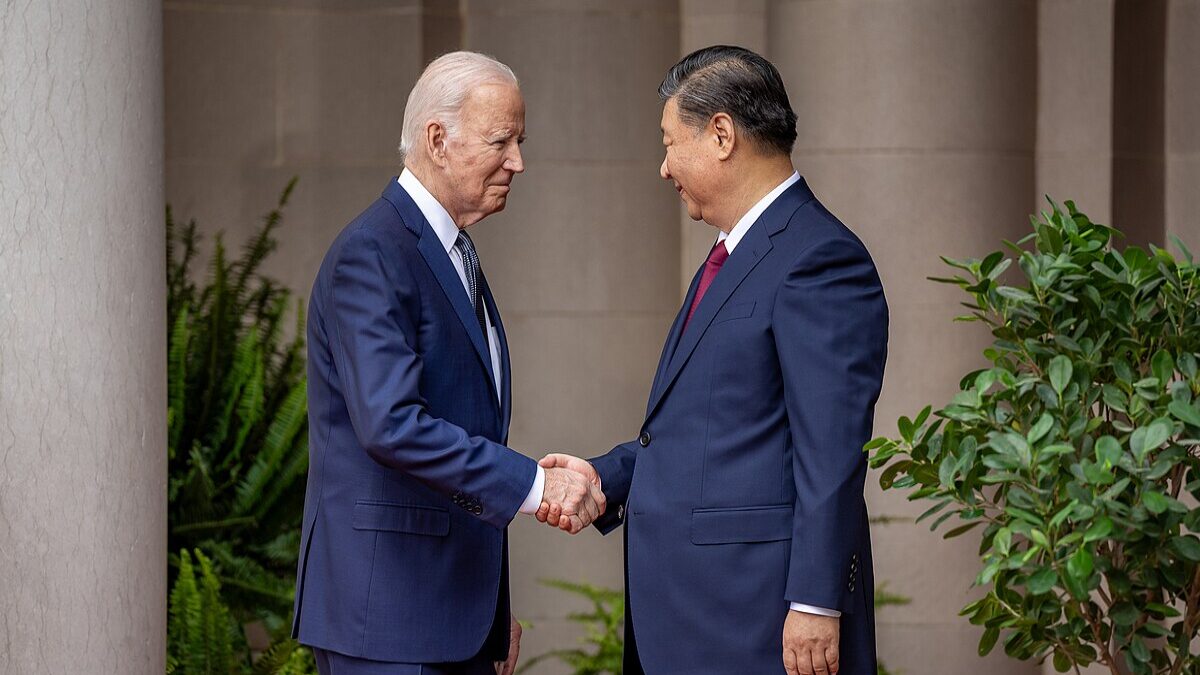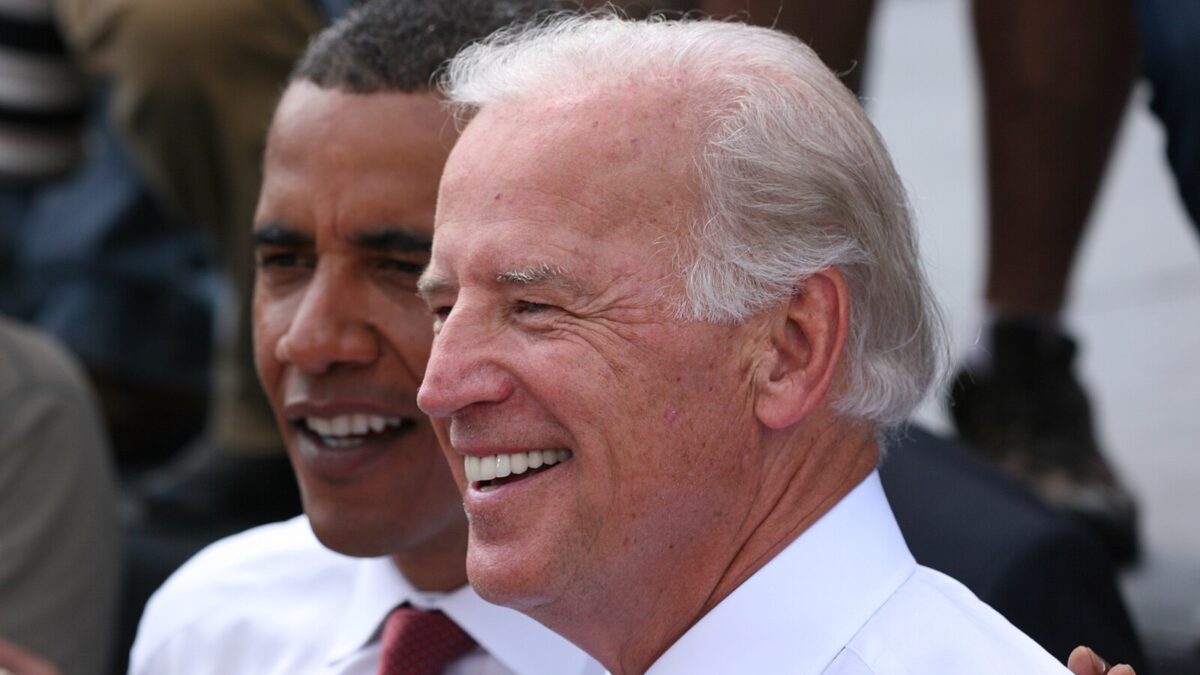
As the Iranian regime restores internet connectivity to vast swaths of the country following a government-imposed shutdown, new images are emerging from the week-long blackout that shed light on the severity of the tensions between the Iranian people and their repressive regime.
Naturally, the media has characterized the protests as stemming from economic distress resulting from sanctions imposed by the Trump administration. These narrative-building, myopic portrayals (more here and here) minimize the long-term concerns of the Iranian people, likely for the sake of salvaging the supposed crown jewel of Obama’s foreign policy legacy—the Joint Comprehensive Plan of Action (JCPOA) or more simply, the “Iran Deal.”
Less than two weeks ago, protests were sparked nationwide in dozens of cities and towns after the Iranian regime hiked gasoline prices by up to 200 percent, sending the already teetering economy into tumult. Although the government heavily subsidizes gasoline, the price jump still came as a shock to the Iranian economy, which is already buckling under high inflation and unemployment.
Iranian President Hassan Rouhani alleged that the increased funds from the sale of gasoline would be used to fund welfare programs, whose costs have allegedly ballooned due to U.S. sanctions crippling the economy. But, unlike Western media outlets, the Iranian people remain wary of the regime’s attempts to assuage their economic frustrations, many treating the protests as an opportunity to challenge the legitimacy of the government as a whole, whose unpopularity continues to grow.
“One year into the U.S. unilateral sanctions campaign against Iran – which have been more effective than the past decade of multilateral sanctions – Iranians are pouring out onto the streets and pointing a finger at their own leaders, not Washington, for their shortcomings,” asserts Behnam Ben Taleblu, a senior fellow at the Washington-based Foundation for the Defense of Democracies.
According to Amnesty International, at least 143 protesters have been killed in confrontations with the regime’s security forces, while reports from U.S.-based nonprofit Center for Human Rights in Iran allege that almost 3,000 others have been arrested. Due the internet blackout intentionally orchestrated by the Iranian regime to isolate dissidents and prevent the spread of information about the protests, the violent nature of the clashes between protesters and regime security forces is only coming to light now.
As Amnesty reports, “Verified videos show security forces deliberately shooting unarmed protesters from a short distance. In some cases, protesters were shot while they were running away.” Other videos reveal images of security forces shooting at protesters from rooftops. Across the country, tens of gasoline pumps, police stations, and banks have been razed to the ground.
The recent protests, which Western media will likely go through great lengths to pin on the Trump administration’s decision to renew sanctions on Iran, have torpedoed parts of the country into chaos. But this interpretation is inaccurate and short-sighted. “To say the protests are therefore Washington’s ‘fault’ is not only far off the mark, it lets the regime off the hook for its budget decisions forced upon its leadership because of their preference for a revolutionary foreign policy,” argues Taleblu.
Hearkening back to the inception of the Islamic Revolution, the Iranian government and the Islamic Revolutionary Guard Corps (IRGC) have perennially sought to establish hegemony over Iraq, Lebanon, Syria, and Yemen, using the large Shi’ite populations in each region as an “in.”
As Hanin Ghaddar wrote in The Tower back in 2016, “From the very beginning, Iran’s goal has been the establishment of a Shi’ite Arab territory that physically links Iran to southern Lebanon via Iraq and Syria.” But fulfilling this behemoth mission has translated into the Iranian regime allocating funds to, among other things, the development of missile technologies and a burgeoning nuclear program, as well as resulted in the funneling of billions of dollars to various regimes (like Bashar al-Assad’s in Syria) and to terrorist proxies (such as Hezbollah and Hamas).
With Iran’s budget, transparency is a pipe dream, but some have attempted to crunch the numbers. It’s rumored that Assad received roughly $15 billion in aid from the Iranian regime in 2015. Meanwhile, Hezbollah, the terrorist group effectively seeking to run Lebanon, allegedly receives $700 million from Iranian coffers each year.
“Washington’s non-kinetic (peaceful) pressure policy is robbing the regime of revenues, forcing it to choose between ‘guns and butter.’” Taleblu evokes the classic economic model used to explain production choices in a given country when parsing down the regime’s economic preferences. “As [Iran] chooses guns, it risks increasing domestic ire from its own population for its choices.” Indeed, the protests represent the ultimate manifestation of that ire.
But there is hope for the Iranian people seeking to end the repressive tactics of the current regime, and U.S. policy moving forward may be able to play a not-insignificant role in that effort. However, media outlets are likely to be less-than-thrilled to cover what amounts to full-throated rejection of Obama-era appeasement tactics.
“Washington desperately needs an Iran protest policy playbook,” Taleblu asserts. “It cannot afford to miss opportunities to stand with those whose aspirations are in concert both with American values and strategy in the Middle East.”
Taleblu outlines what he regards as a possible plan of action for the Trump administration in the coming months as protests unfold. “Washington must make sure that Iranians can both communicate freely and can access the internet when its being filtered or blacked out altogether.” In the latest rounds of protests, the regime’s ability to shut down the country’s internet amounted to an effective strategy of containment, siphoning off protesters from forming potential allies in the global community.
In addition to an effective sanction campaign for identifying and shaming those who violate Iranian human rights, Taleblu also argues that the situation would benefit from the U.S. offering “rhetorical support, quickly and decisively, for when Iranians take to the streets to use every single crisis – social, political, economic – to express their dissatisfaction with the regime.”
Taleblu’s strategies represent a powerful means of supporting freedom-seeking people without immediately resorting to military tactics to do so. They also indicate that the Trump administration has the power to strike an effective deal with a group of individuals, even if informal in some capacities. Unlike the Obama administration, let’s hope it’s with the right ones.









